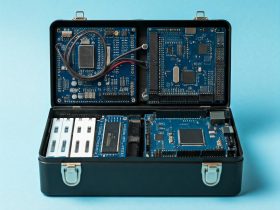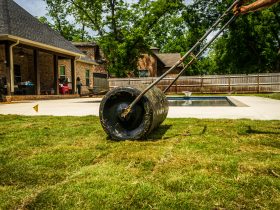Many gun owners put a lot of thought into buying the right firearm but give very little consideration to the holster. That can prove a huge mistake because the holster connects your weapon to you and is vital for comfort, safety, and accessibility in times of need.
Consider the Material
A holster is more than just an accessory; it’s the bridge between your gun and your readiness for self-defense. That’s why it’s essential to take the time to find one that suits your needs and provides safe, comfortable wear.
Choosing the right holster also means selecting a suitable material. Consider materials like Kydex or leather, depending on what type of gun you carry and where. Both are durable and offer a variety of features that make them ideal for concealed carry.
The best holsters are made from sturdy materials that protect the trigger and allow for a smooth draw. Some are even designed to prevent your firearm from accidentally discharging. Other factors to consider include passive retention and active retention.
Consider the Style
One of the most important factors regarding a concealed carry holster is getting a full combat grip on your weapon upon drawing. If your holster doesn’t offer this, look elsewhere.
Leather holsters take a while to break in and can wear down quickly. However, they are comfortable to carry and allow you to access your firearm quickly.
A simple holster is an excellent pocket carry choice. It’s available for many firearm models, including those with lights and lasers. It also has built-in pouches for extra mags and a knife. This holster is made from premium center-cut steer hide and can be adjusted to fit your specific gun.
Consider the Weight
Regarding concealed carry holsters, weight can be a significant factor. A loaded gun in your holster will weigh down on the holster, the belt, and your clothing. This can cause discomfort over time and can also lead to physical injuries if you’re not careful.
A quality holster will be sturdy enough to support the weight of a loaded firearm without becoming too bulky or heavy. This is especially important with inside-the-waistband (IWB) holsters. Look for a holster that uses a solid, reinforced belt clip and a plastic shell that maintains pressure.
If you need more clarification on a holster, consider looking for one with a return period. This way, you can test it and ensure it’s a good fit before purchasing.
Consider the Fit
The fit of the holster is crucial for concealed carry. A poorly fitted holster could cause the firearm to become loose, making it more challenging to draw from and potentially dangerous.
The size and style of your gun will also affect how easily it fits in a holster. For example, a large-frame revolver may be more challenging to conceal than a semi-auto with a much slimmer profile.
Consider how you plan to wear your holster, including the time of year and specific activities. For example, if you’re going to be hiking, you might want an outside-the-waistband or OWB holster. On the other hand, you can carry an inside-the-waistband or IWB if you’re travelling.
Consider the Price
When choosing a concealed carry holster, you need to consider the price. It is essential to find one that is affordable for you. However, it is also important to remember that a holster’s price should not be the sole factor in your decision-making process. The best holster for you will be functional, comfortable, and effectively conceal your firearm.
A holster that is comfortable to wear will allow you to practice your draw from it without flagging yourself or drawing unwanted attention from others. To test a holster for comfort, try wearing it in a few different situations, such as sitting, driving, walking, etc. Then, make your final choice.








Leave a Reply